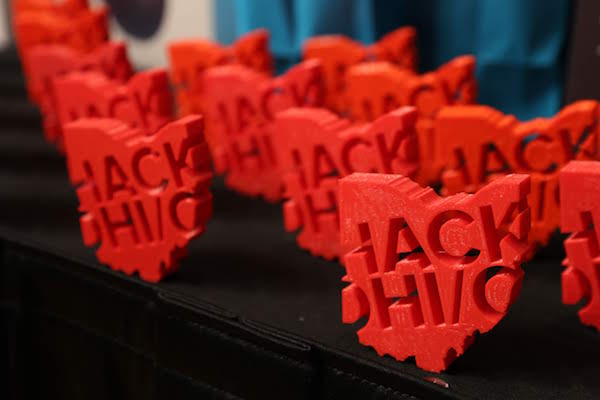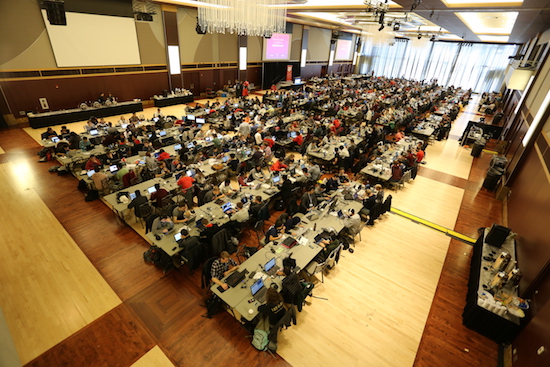Next-Gen Student Competition Profile: HackOHI/O
Ohio State University’s Hackathon problem-solves technologies.

Latest News
January 14, 2021
HackOHI/O is Ohio State University’s annual hackathon, a 24-hour event during which student competitors work in teams of two to four members to innovate, develop and demonstrate their software projects. Teams select their own project ideas or choose from the sponsors’ provided “challenges” to solve a problem with technology.
HackOHI/O was designed as an interactive event to provide students of all backgrounds and skill levels with a technical community focused on creativity, self-improvement and informal learning outside of the classroom.
The event provides participants with mentors, equipment and any other resources needed to make their ideas a reality. Winning teams can continue refining their products on their own or with industry partners. In a recent event, they had over 800 participants and are always looking to continue growing the event.
Julia Armstrong is the program director of OHI/O. We spoke to Armstrong to gain more insight into this event.
Digital Engineering: Can you provide an overview of the Ohio State Annual Hackathon competition, how it came to be and the intent of the program? Who will be participating or who has participated? How many participants have you had or are you expecting? Any demographics of participants?
Julia Armstrong: HackOHI/O started in the basement of a library in 2013, the dream of faculty Arnab Nandi and Meris Longmeier. Since then, student leaders have worked with them to grow the event and the program, spinning off other events such as MakeOHI/O, the annual makeathon, and High School I/O, a high school hackathon. The OHI/O program now supports nearly a dozen competitive events, plus industry-led workshops, student project grants, scholarships and partnerships across campus in the innovation and entrepreneurship realms. HackOHI/O remains the largest event occurring every autumn in the Ohio Union.

DE: Can you provide some examples of what the event has produced or what you expect it to produce?
Armstrong: Teams produce a wide variety of applications. Some have business potential such as Transity, a city planning tool based on commuting pattern data, a safe-alert automation app, and TicketBay, an electronic ticket transfer system. Others are more for the student’s experiential value such as a Skittles Sorter to understand light sensor implementation and calibration, programming the microprocessor and building the mechanical structure to sort the Skittles by color.
DE: Does HackOHI/O have a particular stance on adopting an innovation that is linked to the program? What drove them to sponsor the event and coordinate it?
Armstrong: OHI/O explores informal learning as an avenue for expressing innovation and creativity. While educational experiences are the core of why we do what we do, our sponsors and partners recognize the importance of supporting the entrepreneurial spirit and encouraging students to build upon their ambitions. Because of their support, OHI/O offers program grants and supports students who want to take their project to the next level.
Regarding HackOHI/O changing and becoming more innovative, the student teams who plan and operate the event are constantly driving new innovations. Just a few examples are the process and tools used for judging, the online systems we’ve used to connect student questions to mentorship help, and even hosting an internal event called “hack the hack” for anyone helping to build new and better tools to operate the event or support the OHI/O Program.
DE: Anything else you’d like to tell us about the event that the above questions haven’t given you the opportunity to express?
Armstrong: OHI/O’s goal has always been to assist in fostering a technical community emphasizing the free flow of ideas and knowledge. We believe HackOHI/O provides an environment for individuals of all backgrounds and skill levels to create, innovate and learn.
We recognize the difficulty of building such a culture through a single 24-hour event. We are dedicated—and have proven success —in creating more events year-round by partnering with student groups in various areas of tech plus focusing on adding opportunities and support for participants to continue refining their initial prototypes.
Jim Romeo is a freelance writer based in Chesapeake, VA. Send e-mail about this article to [email protected]
Subscribe to our FREE magazine, FREE email newsletters or both!
Latest News
About the Author
Jim Romeo is a freelance writer based in Chesapeake, VA. Send e-mail about this article to [email protected].
Follow DE





